Investigation of Lattice Geometries Formed by Metal Powder Additive Manufacturing for Energy Absorption: A Comparative Study on Ti6Al4V, Inconel 718, and AISI 316L
Abstract
1. Introduction
2. Materials and Methods
2.1. Structure Description
2.2. Material and Manufacturing
2.2.1. Ti6Al4V (Titanium Alloy Grade 5)
2.2.2. AISI 316L (Stainless Steel)
2.2.3. Inconel 718 (Nickel Alloy)
2.3. Manufacturing Process of Samples
3. Experimental Setup
3.1. Static Compression Tests
3.2. Impact Resistance Index
4. Results and Discussion
4.1. Experiments on Ti6Al4V Powder
4.2. Experiments on AISI 316L Powder
4.3. Experiments on Inconel 718 Powder
5. Conclusions
- When the study was evaluated in terms of production performance, good production was achieved for all powders. Surface defects and dislocations were realized at a minimum level. It is understood that the quality of the samples produced from Ti6Al4V and Inconel 718 powders is better than AISI 316L. Deep cracks formed in the cell joints of AISI 316L material caused lower forces against axial load. With better production quality, the amount of force and energy absorption of AISI 316L materials can be increased.
- In terms of energy absorption and crushing efficiency, hybrid structures performed better than thin-wall structures in all materials. This shows that hybrid structures have a better performance in energy absorption.
- The materials belonging to Ti6Al4V powder generally absorbed more energy than the other samples in terms of energy absorption efficiency due to their low specific gravity. The normalized hexagonal–hexagonal structure No. 1 showed 4.3 times higher energy absorption efficiency.
- According to the normalized values, the hexagonal–hexagonal structures of Ti6Al4V and Inconel 718 materials generated a reaction force up to 10 times higher in terms of the initial peak force.
- One of the most important criteria in the behavior of structures under pressure is the mechanical behavior of the material. For this reason, the specimens produced from AISI 316L material provided better performance than other specimens in terms of crushing performance, thanks to their ductile structure, and showed a regular fracture graph. And it gave up to four times better results in average crushing force.
- In all experimental groups, hexagonal wall geometry showed better performance in terms of energy absorption than square structures. Since hexagonal structures can distribute the load evenly and can do so on more surfaces, they have shown better performances.
- Since the geometry of the cell elements forming the cellular structures is compared in terms of its effect on the strength of the structure, it is determined that the hexagonal structure performs relatively better than the circular structure. Since the diameters of the structures in question are 0.6 mm, the difference is small, but it is obvious that it will create more differences when the structure is enlarged.
- Hybrid structures are very difficult to produce with traditional methods. In terms of production performance, the additive manufacturing method allowed precise and accurate production within tolerances. Dimensional checks with a 3D scanner confirmed that the samples were successfully manufactured within tolerances of ±0.07–0.004 in general.
Author Contributions
Funding
Data Availability Statement
Acknowledgments
Conflicts of Interest
Abbreviations
| ABS | Anti-lock Brake System |
| ESP | Electronic Stability Program |
| ASR | Acceleration Slip Regulation |
| PLA | Polylactic Acid |
| PDMS | Polydimethylsiloxane |
| CAD | Computer Aided Design |
| SLM | Computer Aided Engineering |
| SEM | Scanning Electron Microscopes |
References
- Furlan, A.D.; Kajaks, T.; Tiong, M.; Lavalliere, M.; Campos, J.L.; Babineau, J.; Haghzare, S.; Ma, T.; Vrkljan, B. Advanced vehicle technologies and road safety: A scoping review of the evidence. Accid. Anal. Prev. 2020, 147, 105741. [Google Scholar] [CrossRef]
- Goniewicz, K.; Goniewicz, M.; Pawlowski, W.; Fiedor, P. Road accident rates: Strategies and programmes for improving road traffic safety. Eur. J. Trauma Emerg. Surg. 2016, 42, 433–438. [Google Scholar] [CrossRef] [PubMed]
- Castillo-Manzano, J.I.; Castro-Nuño, M.; Fageda, X. Exploring the relationship between truck load capacity and traffic accidents in the European Union. Transp. Res. Part. E Logist. Transp. Rev. 2016, 88, 94–109. [Google Scholar] [CrossRef]
- Palkovics, L.; Fries, A. Intelligent electronic systems in commercial vehicles for enhanced traffic safety. Veh. Syst. Dyn. 2001, 35, 227–289. [Google Scholar]
- Rahimi, E.; Shamshiripour, A.; Samimi, A.; Mohammadian, A.K. Investigating the injury severity of single-vehicle truck crashes in a developing country. Accid. Anal. Prev. 2020, 137, 105444. [Google Scholar] [CrossRef]
- Trafik Kazaları Özeti. 2025. Available online: https://www.kgm.gov.tr/SiteCollectionDocuments/KGMdocuments/Trafik/TrafikKazalariOzeti2023.pdf (accessed on 28 January 2025).
- Dąbrowski, F.; Grzejszczyk, Z.; Rzymkowski, C.; Wiśniewski, P. Frontal Impact Energy Absorbers for Passenger Cars. Sensors 2024, 24, 6563. [Google Scholar] [CrossRef]
- Achiri, A.T.; Mbue, I.N.; Merlin, A.; Gerard, A. Automobile Crash Investigation Based on Vehicle System Related Causes: Systematic Literature Review. World J. Eng. Technol. 2022, 10, 139–157. [Google Scholar] [CrossRef]
- Lv, X.; Xiao, Z.; Fang, J.; Li, Q.; Lei, F.; Sun, G. On safety design of vehicle for protection of vulnerable road users: A review. Thin-Walled Struct. 2023, 182, 109990. [Google Scholar] [CrossRef]
- Nagai, M. The perspectives of research for enhancing active safety based on advanced control technology. Veh. Syst. Dyn. 2007, 45, 413–431. [Google Scholar] [CrossRef]
- Jeong, E.; Oh, C. Evaluating the effectiveness of active vehicle safety systems. Accid. Anal. Prev. 2017, 100, 85–96. [Google Scholar] [CrossRef]
- Bhutada, S.; Goel, M. Crashworthiness parameters and their improvement using tubes as an energy absorbing structure: An overview. Int. J. Crashworthiness 2022, 27, 1569–1600. [Google Scholar]
- Reddy, P.K.; Thakan, A. A Comprehensive Analysis of the Design and Functionality of Regenerative Shock Absorbers: A Review. In Advances in Manufacturing and Materials: Select Proceedings of FLUTE 2023; Springer Nature: Singapore, 2024; p. 285. [Google Scholar]
- Ahangarnejad, A.H.; Radmehr, A.; Ahmadian, M. A review of vehicle active safety control methods: From antilock brakes to semiautonomy. J. Vib. Control 2021, 27, 1683–1712. [Google Scholar]
- Jarašūniene, A.; Jakubauskas, G. Improvement of road safety using passive and active intelligent vehicle safety systems. Transport 2007, 22, 284–289. [Google Scholar]
- Li, L.; Tian, S.; Zhou, W.; Wang, F. Application of driving simulators in the validation test for vehicle active safety system. Int. J. Crashworthiness 2023, 28, 159–169. [Google Scholar]
- Raith, A.; Sattler, K.; Ertlmeier, R.; Brandmeier, T. Networking and integration of active and passive safety systems. In Proceedings of the 2011 Ninth International Workshop on Intelligent Solutions in Embedded Systems, Regensburg, Germany, 7–8 July 2011; pp. 75–80. [Google Scholar]
- Zhao, Z.; Fan, X. Review of vehicle active safety systems and their coordinated control. Recent Pat. Mech. Eng. 2021, 14, 4–17. [Google Scholar]
- Ferenczi, I.; Helmer, T.; Wimmer, P.; Kates, R. Recent Advances in Effectiveness Analysis and Virtual Design of Integrated Safety Systems. In Proceedings of the 24th International Technical Conference on the Enhanced Safety of Vehicles (ESV), Gothenburg, Sweden, 8–11 June 2015; p. 7. [Google Scholar]
- Gobbi, M.; Haque, I.; Papalambros, P.; Mastinu, G. A critical review of optimization methods for road vehicles design. In Proceedings of the 11th AIAA/ISSMO Multidisciplinary Analysis and Optimization Conference, Portsmouth, VA, USA, 6–8 September 2006; p. 6998. [Google Scholar]
- Udugu, K.; Saddala, V.R.; Lingan, S. Active and Passive Safety: An Overview on Establishing Safety Assessment Standards in India; SAE Technical Paper 2016-28-0244; SAE International: Warrendale, PA, USA, 2016. [Google Scholar]
- Abdullah, N.; Sani, M.; Salwani, M.; Husain, N. A review on crashworthiness studies of crash box structure. Thin-Walled Struct. 2020, 153, 106795. [Google Scholar]
- Doğan, U.Ç. Effect of Strain History on Simulation of Crashworthiness. Master’s Thesis, Middle East Technical University, Ankara, Türkiye, 2009. [Google Scholar]
- Goh, G.D.; Neo, S.J.C.; Dikshit, V.; Yeong, W.Y. Quasi-static indentation and sound-absorbing properties of 3D printed sandwich core panels. J. Sandw. Struct. Mater. 2022, 24, 1206–1225. [Google Scholar]
- Sarvestani, H.Y.; Akbarzadeh, A.; Niknam, H.; Hermenean, K. 3D printed architected polymeric sandwich panels: Energy absorption and structural performance. Compos. Struct. 2018, 200, 886–909. [Google Scholar]
- Zhou, X.; Qu, C.; Luo, Y.; Heise, R.; Bao, G. Compression behavior and impact energy absorption characteristics of 3D printed polymer lattices and their hybrid sandwich structures. J. Mater. Eng. Perform. 2021, 30, 8763–8770. [Google Scholar]
- Wang, S.; Zhang, M.; Wang, Y.; Huang, Z.; Fang, Y. Experimental studies on quasi-static axial crushing of additively-manufactured PLA random honeycomb-filled double circular tubes. Compos. Struct. 2021, 261, 113553. [Google Scholar]
- Zeng, C.; Liu, L.; Bian, W.; Leng, J.; Liu, Y. Compression behavior and energy absorption of 3D printed continuous fiber reinforced composite honeycomb structures with shape memory effects. Addit. Manuf. 2021, 38, 101842. [Google Scholar]
- Chapkin, W.A.; Simone, D.L.; Frank, G.J.; Baur, J.W. Mechanical behavior and energy dissipation of infilled, composite Ti-6Al-4V trusses. Mater. Des. 2021, 203, 109602. [Google Scholar]
- Cetin, E.; Baykasoğlu, C. Energy absorption of thin-walled tubes enhanced by lattice structures. Int. J. Mech. Sci. 2019, 157, 471–484. [Google Scholar]
- Tancogne-Dejean, T.; Spierings, A.B.; Mohr, D. Additively-manufactured metallic micro-lattice materials for high specific energy absorption under static and dynamic loading. Acta Mater. 2016, 116, 14–28. [Google Scholar]
- Hussain, N.N.; Regalla, S.P.; Rao, Y.V.D. Low velocity impact characterization of glass fiber reinforced plastics for application of crash box. Mater. Today Proc. 2017, 4, 3252–3262. [Google Scholar]
- Tripathy, L.; Lu, W.F. Evaluation of axially-crushed cellular truss structures for crashworthiness. Int. J. Crashworthiness 2018, 23, 680–696. [Google Scholar]
- Ma, Q.; Rejab, M.; Kumar, A.P.; Fu, H.; Kumar, N.M.; Tang, J. Effect of infill pattern, density and material type of 3D printed cubic structure under quasi-static loading. Proc. Inst. Mech. Eng. Part. C J. Mech. Eng. Sci. 2021, 235, 4254–4272. [Google Scholar]
- Tao, C.; Zhou, X.; Liu, Z.; Liang, X.; Zhou, W.; Li, H. Crashworthiness Study of 3D Printed Lattice Reinforced Thin-Walled Tube Hybrid Structures. Materials 2023, 16, 1871. [Google Scholar] [CrossRef]
- Yeşiloğlu, R. Eklemeli İmalat İle Üretilen Farklı Dolgu Geometrisi ve Yoğunluğa Sahip PLA Esaslı Yapıların Mekanik Davranışlarının Deneysel Olarak Araştırılması. Master’s Thesis, Karabük Üniversitesi, Ankara, Türkiye, 2022. [Google Scholar]
- Solmaz, M.; Çelik, E. Investigation of compression test performances of honeycomb sandwich composites produced by 3d printing method. Sci. Eng. J. Firat Univ. 2018, 30, 277–286. [Google Scholar]
- Bourell, D.; Kruth, J.P.; Leu, M.; Levy, G.; Rosen, D.; Beese, A.M.; Clare, A. Materials for additive manufacturing. CIRP Ann. 2017, 66, 659–681. [Google Scholar]
- Laleh, M.; Sadeghi, E.; Revilla, R.I.; Chao, Q.; Haghdadi, N.; Hughes, A.E.; Xu, W.; De Graeve, I.; Qian, M.; Gibson, I. Heat treatment for metal additive manufacturing. Prog. Mater. Sci. 2023, 133, 101051. [Google Scholar] [CrossRef]
- Chituc, C.-M. XML interoperability standards for seamless communication: An analysis of industry-neutral and domain-specific initiatives. Comput. Ind. 2017, 92, 118–136. [Google Scholar]
- Sun, C.; Wang, Y.; McMurtrey, M.D.; Jerred, N.D.; Liou, F.; Li, J. Additive manufacturing for energy: A review. Appl. Energy 2021, 282, 116041. [Google Scholar] [CrossRef]
- Yalçın, B.; Ergene, B. Endüstride yeni eğilim olan 3-D eklemeli imalat yöntemi ve metalurjisi. Uluslararası Teknol. Bilim. Derg. 2017, 9, 65–88. [Google Scholar]
- Singh, S.; Ramakrishna, S.; Singh, R. Material issues in additive manufacturing: A review. J. Manuf. Process. 2017, 25, 185–200. [Google Scholar] [CrossRef]
- Strano, G.; Hao, L.; Everson, R.M.; Evans, K.E. Surface roughness analysis, modelling and prediction in selective laser melting. J. Mater. Process. Technol. 2013, 213, 589–597. [Google Scholar] [CrossRef]
- Karakilinç, U.; Yalçın, B.; Ergene, B. Toz Yataklı/Beslemeli Eklemeli İmalatta Kullanılan Partiküllerin Uygunluk Araştırması ve Partikül İmalat Yöntemleri. Politek. Derg. 2019, 22, 801–810. [Google Scholar] [CrossRef]
- ASTM B214-16; Standard Test Method for Sieve Analysis of Metal Powders. ASTM International: West Conshohocken, PA, USA, 2016.
- ASTM Standard B822-20; Standard Test Method for Particle Size Distribution of Metal Powders and Related Compounds by Light Scattering. ASTM International: West Conshohocken, PA, USA, 2020.
- ASTM Standard E8E8M-22; Test Methods for Tension Testing of Metallic Materials. ASTM International: West Conshohocken, PA, USA, 2022.
- ISO 3369:2006; Impermeable Sintered Metal Materials and Hardmetals—Determination of Density. International Organization for Standardization: Geneva, Switzerland, 2006.
- Duman, B.; Kayacan, M.C. Doğrudan metal lazer sinterleme/ergitme yöntemi ile imal edilecek parçanın mekanik özelliklerinin tahmini. Tek. Bilim. Derg. 2017, 7, 12–28. [Google Scholar]

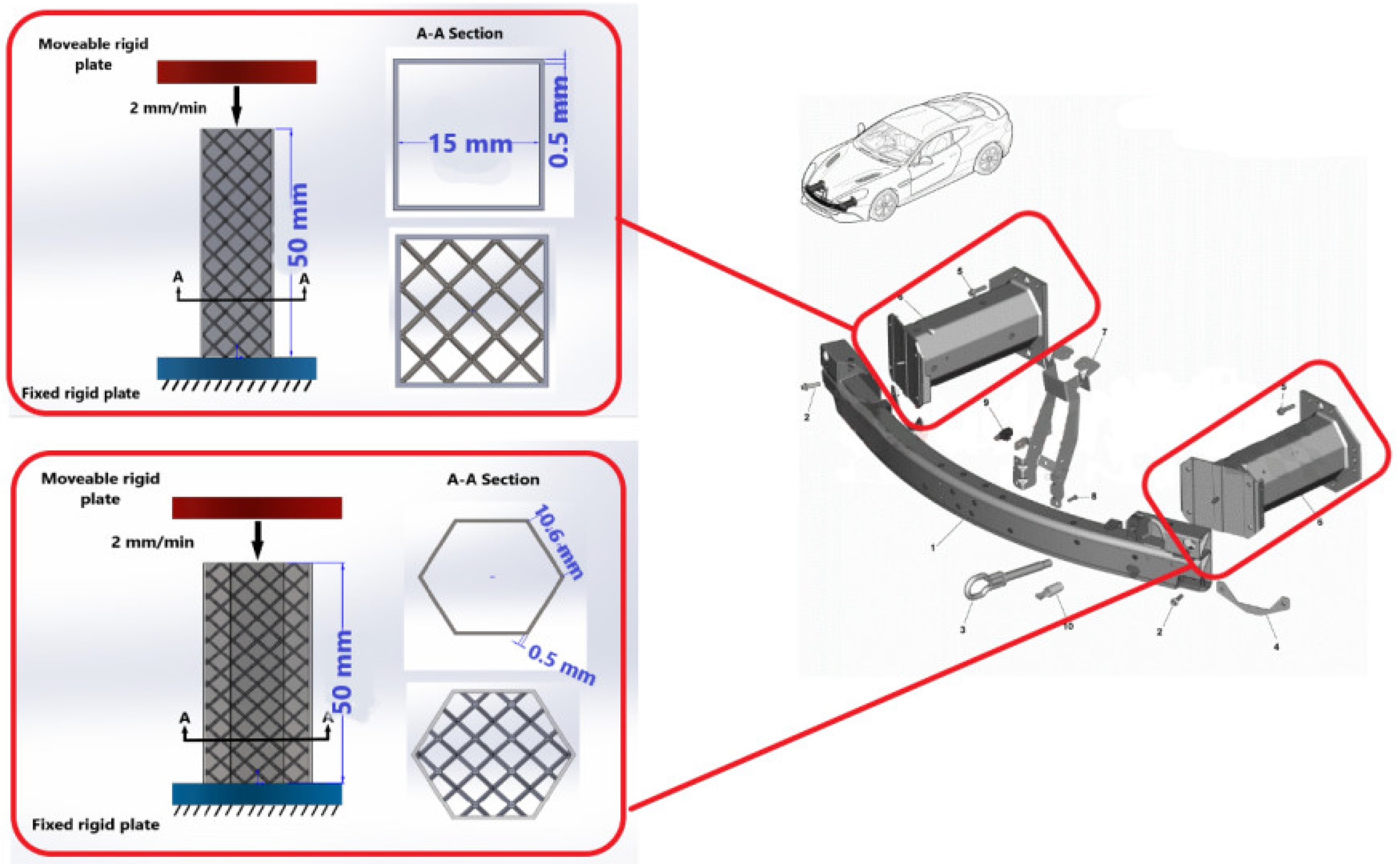
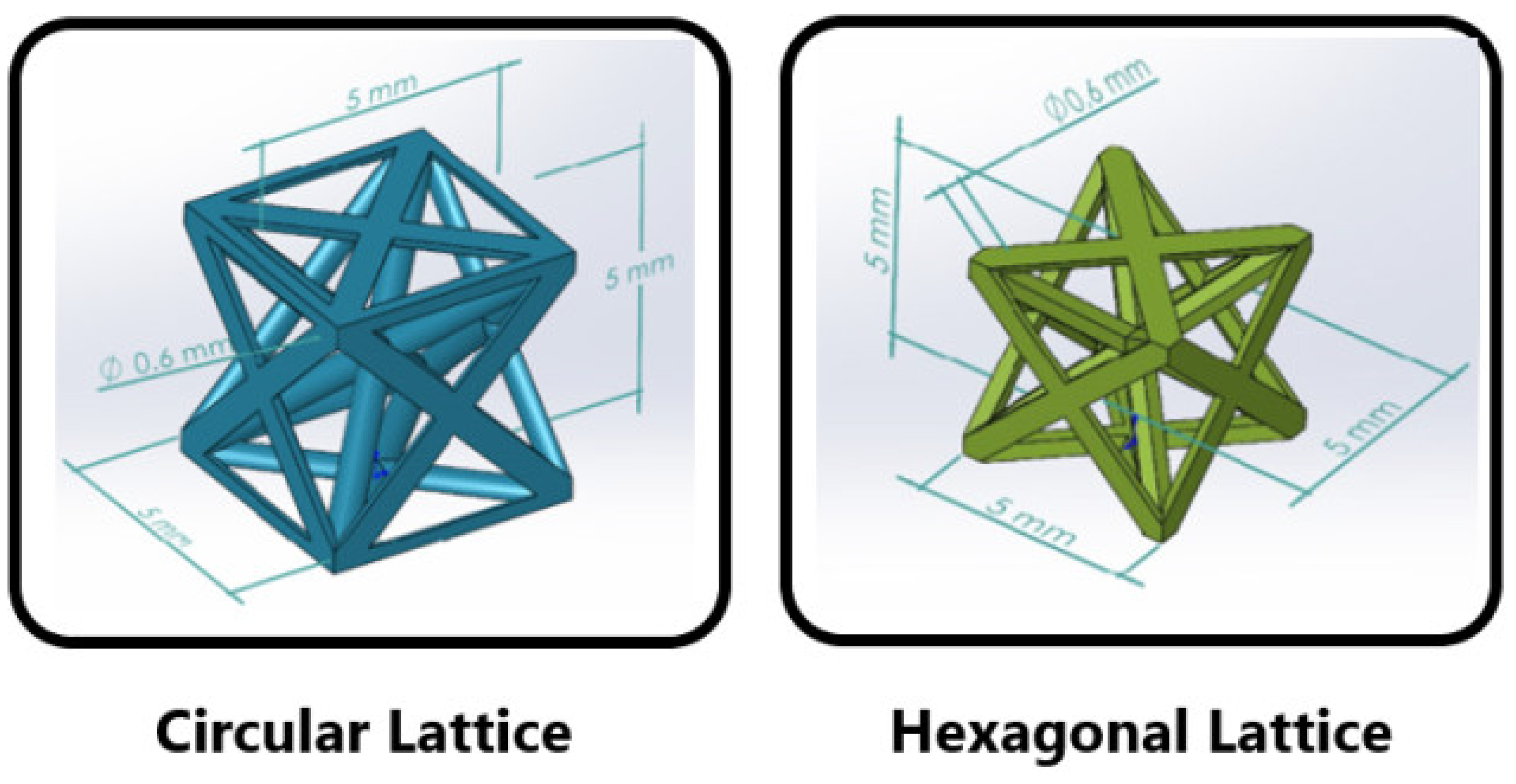
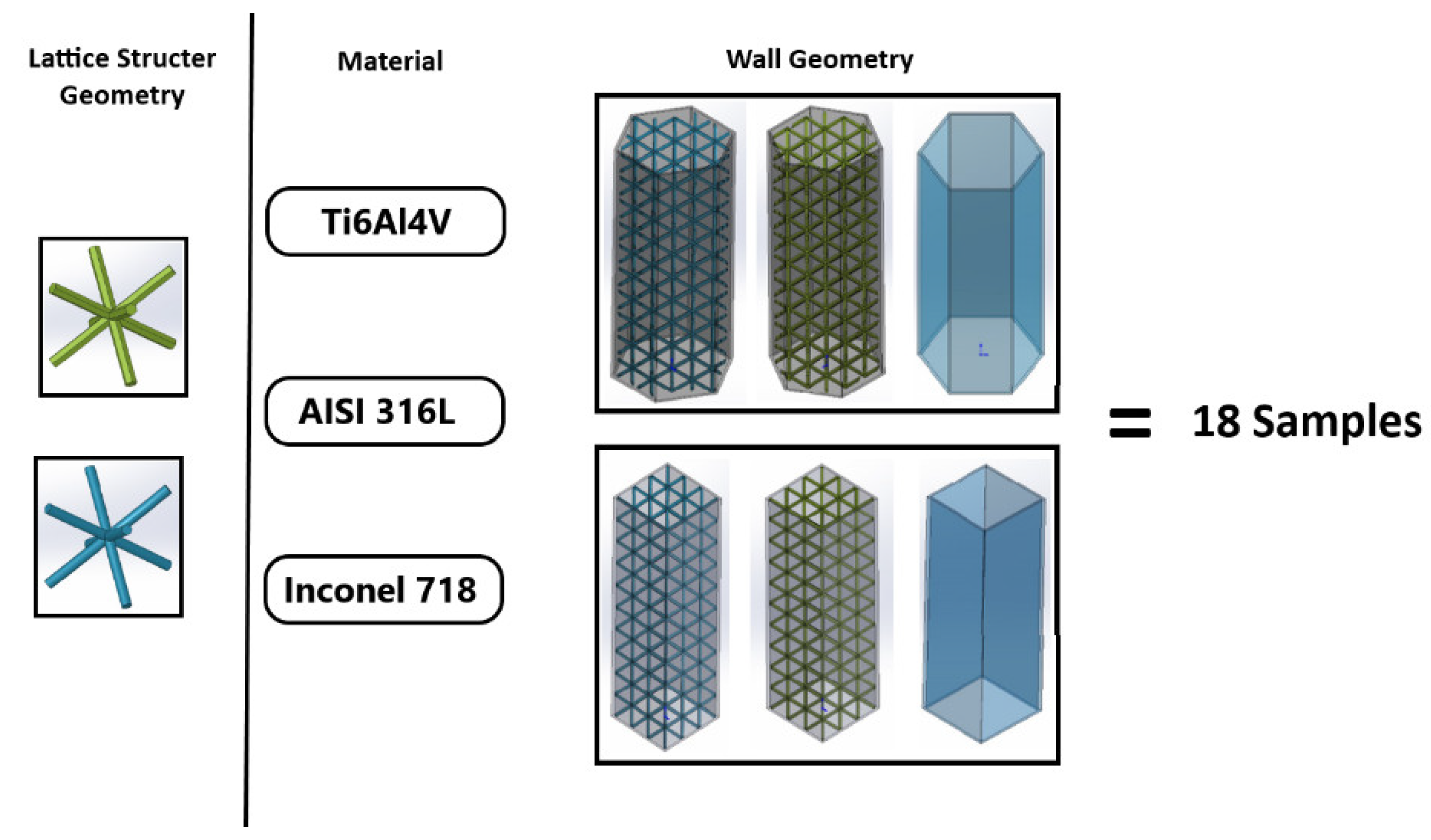
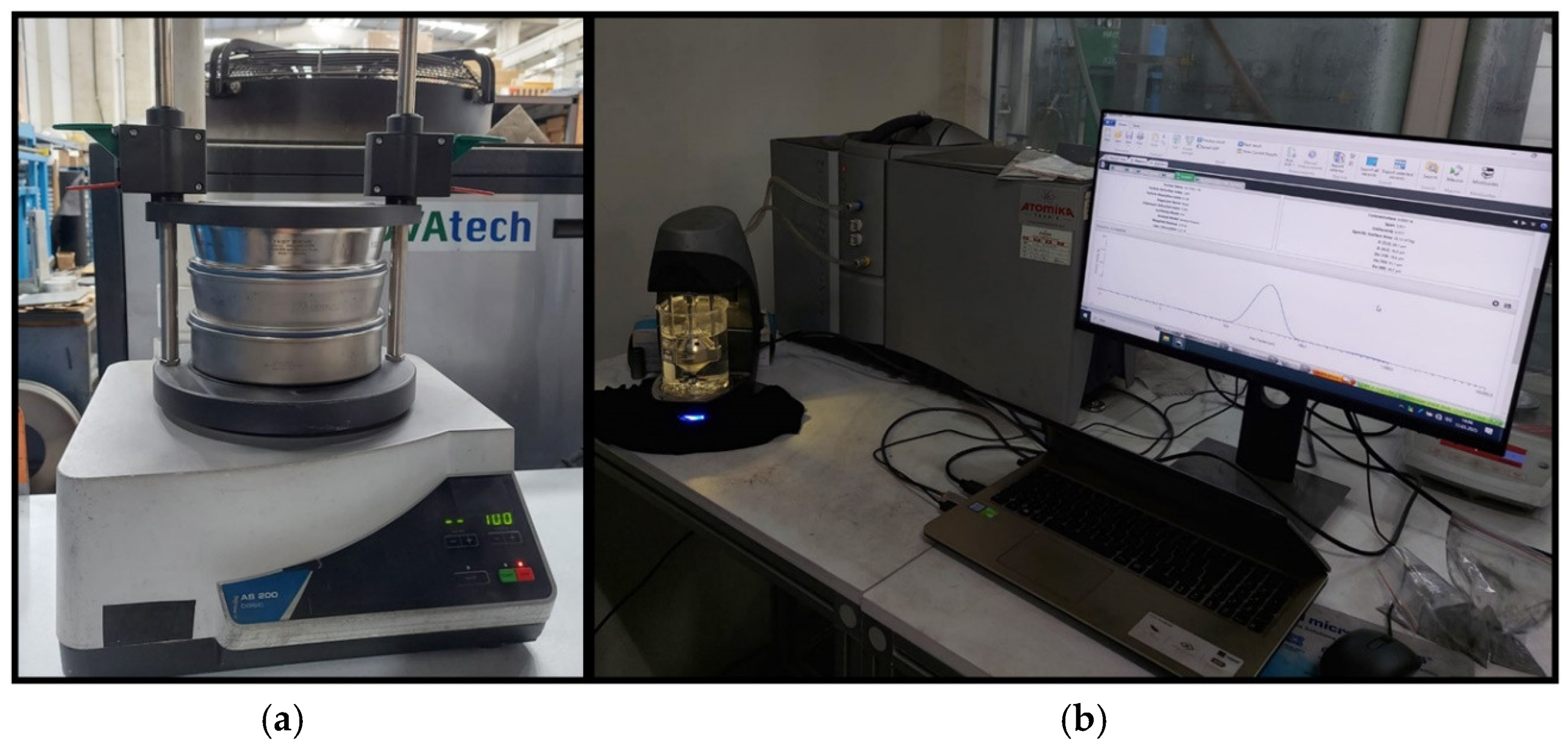
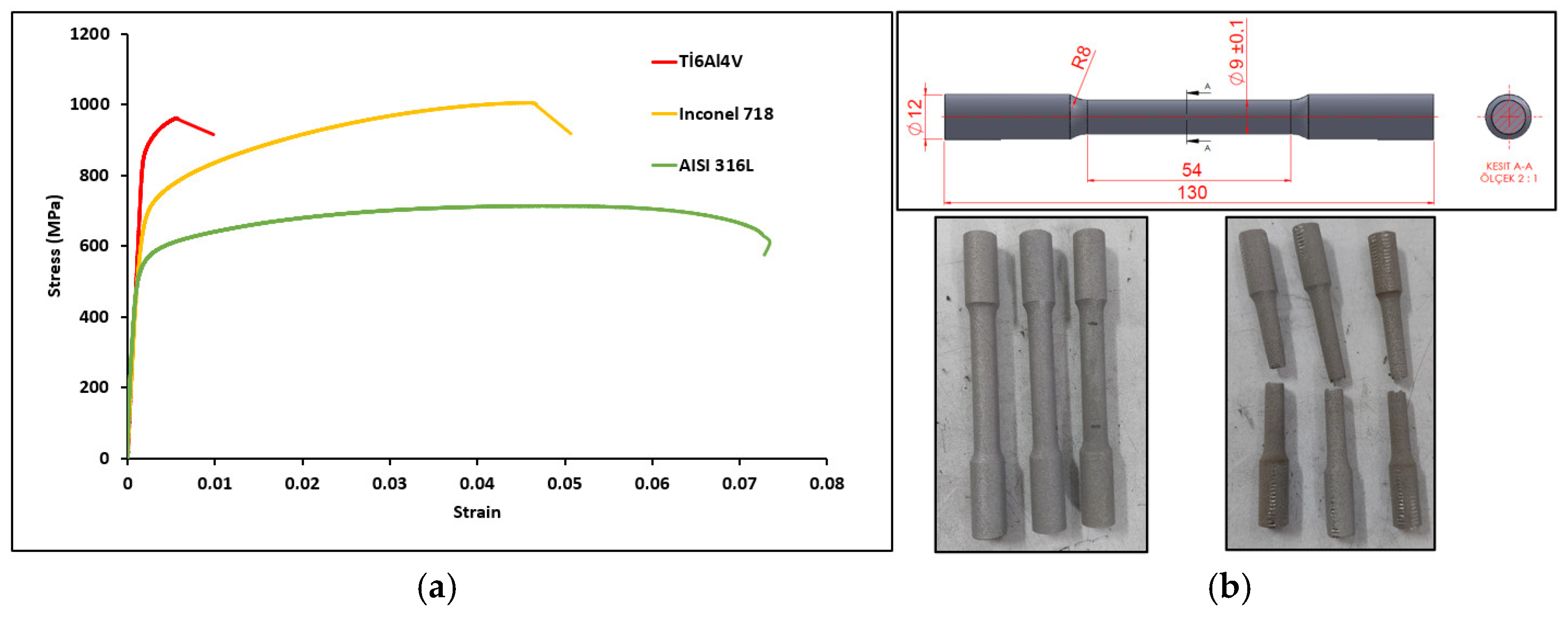
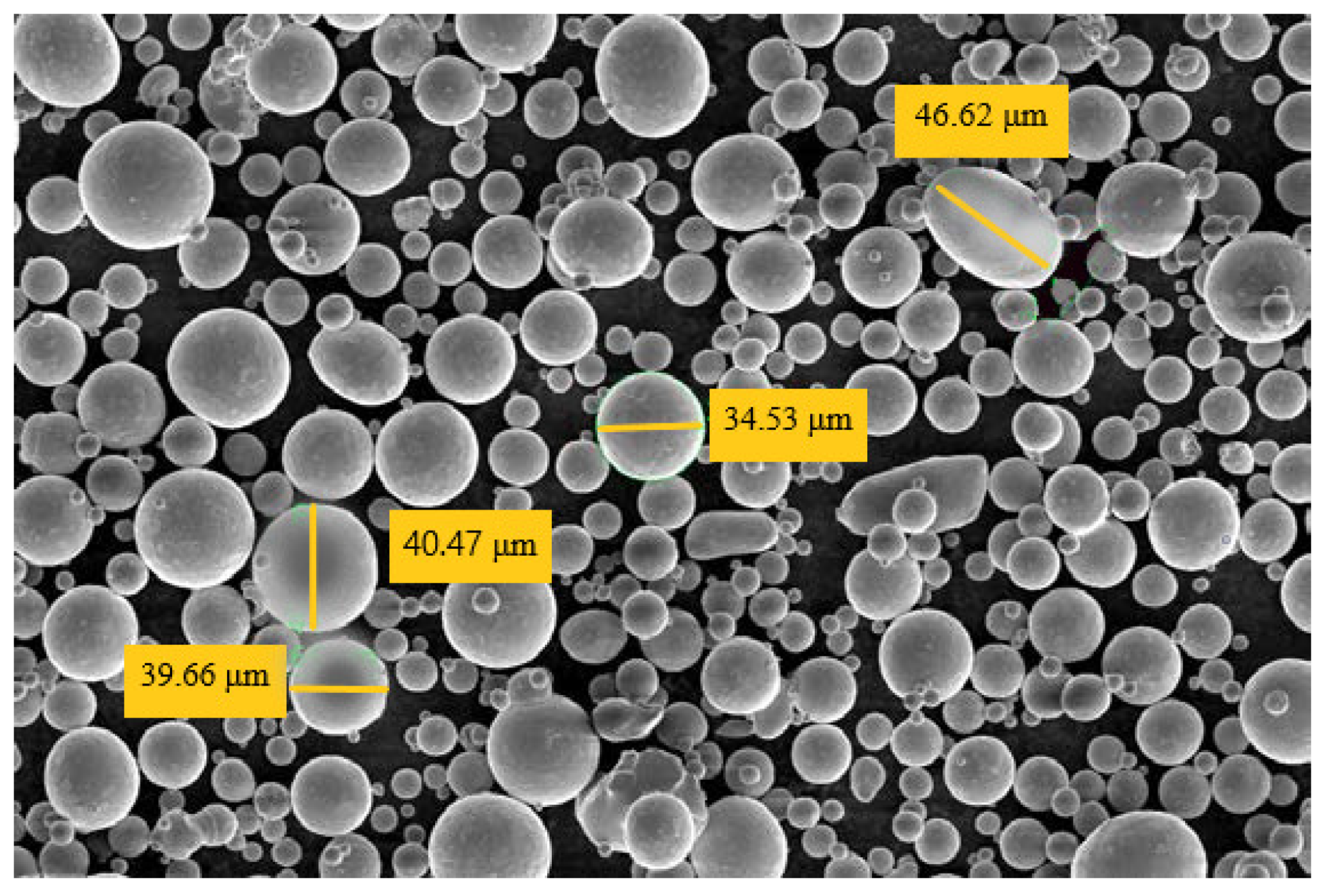
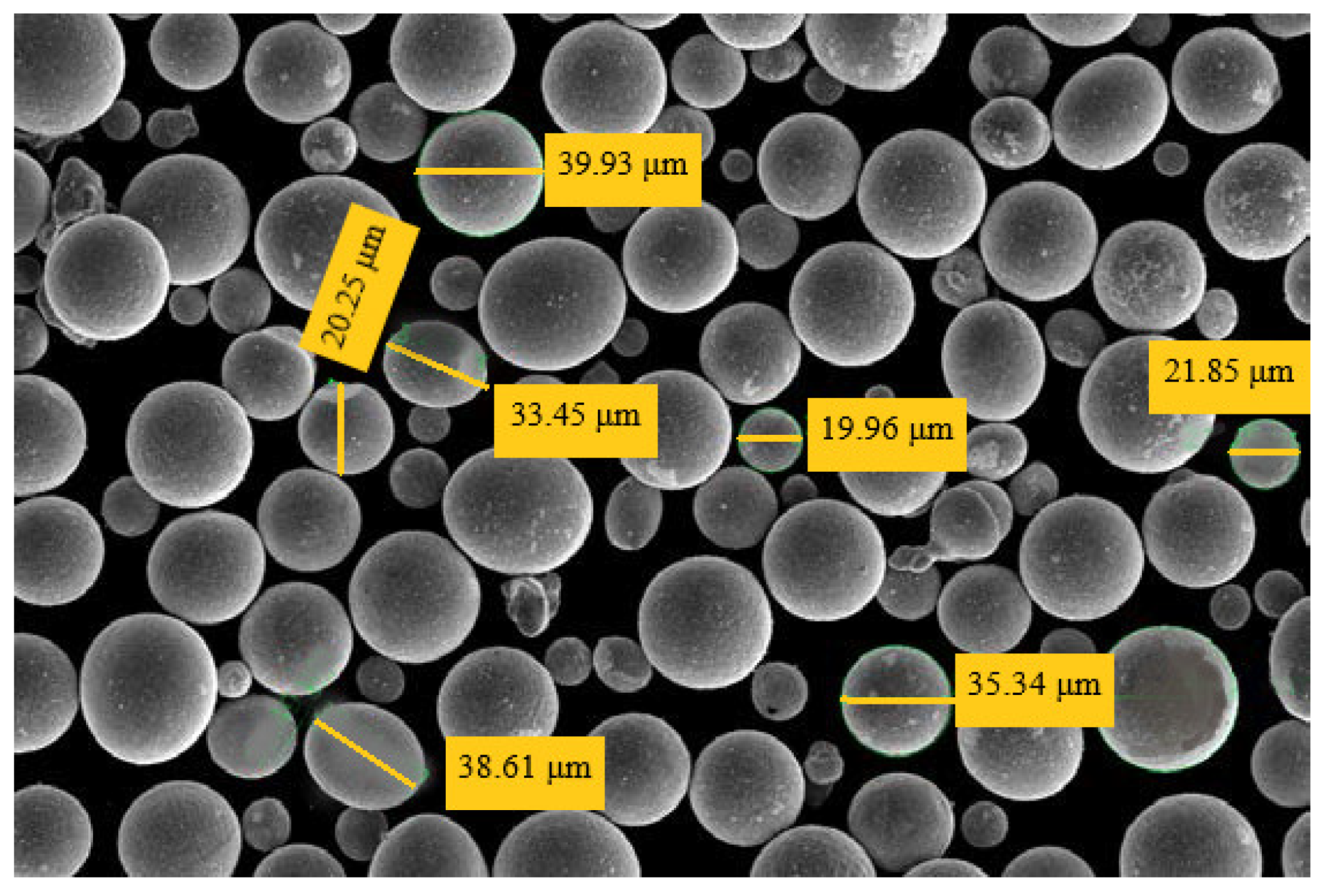
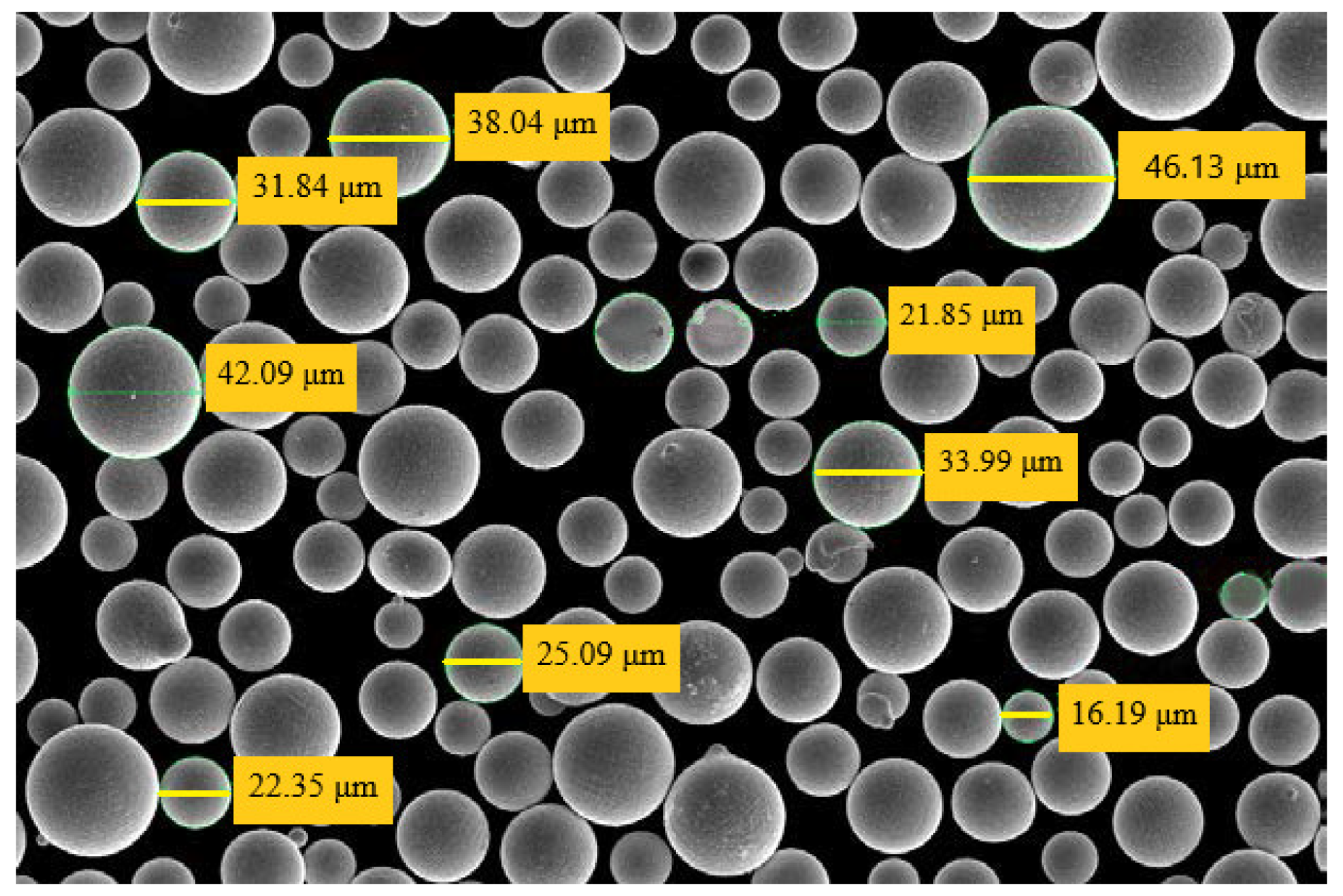
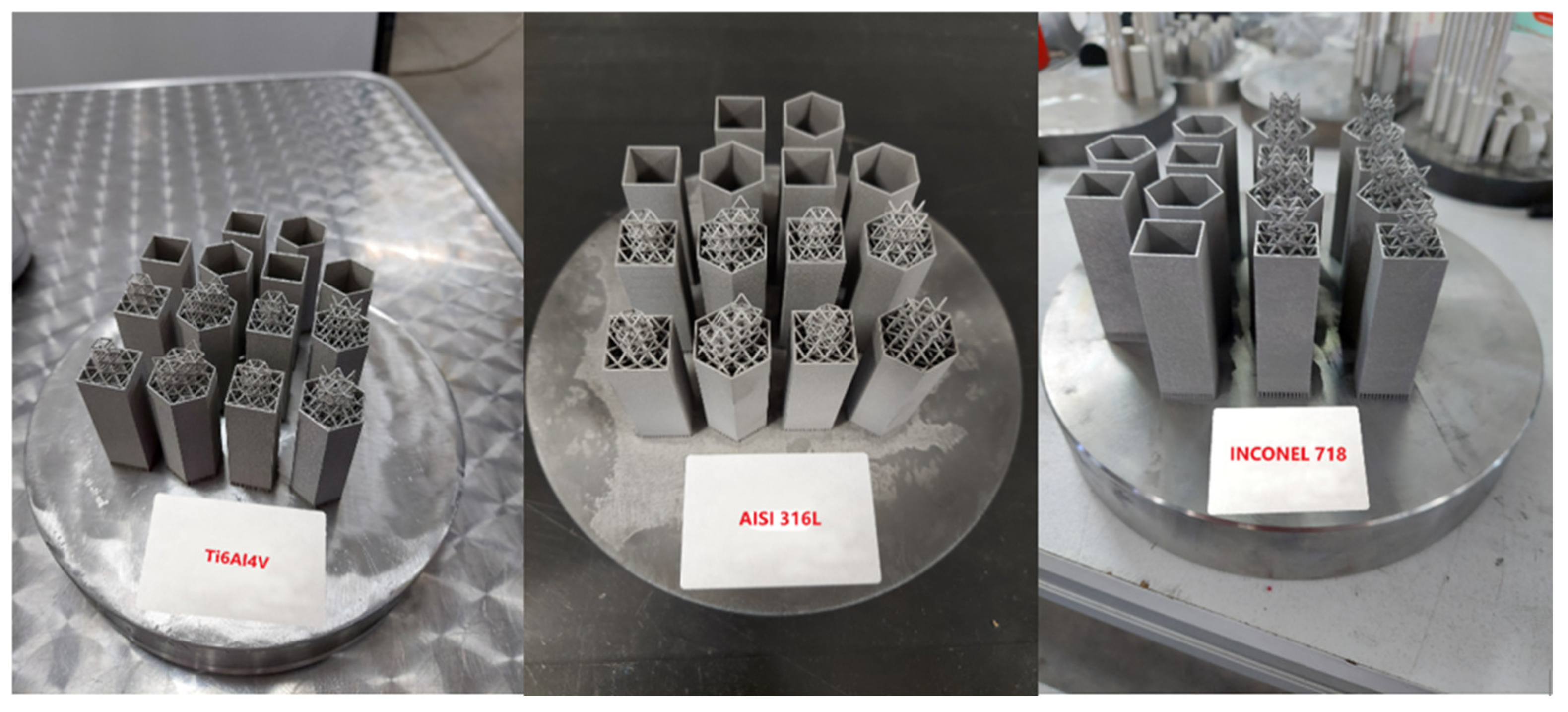
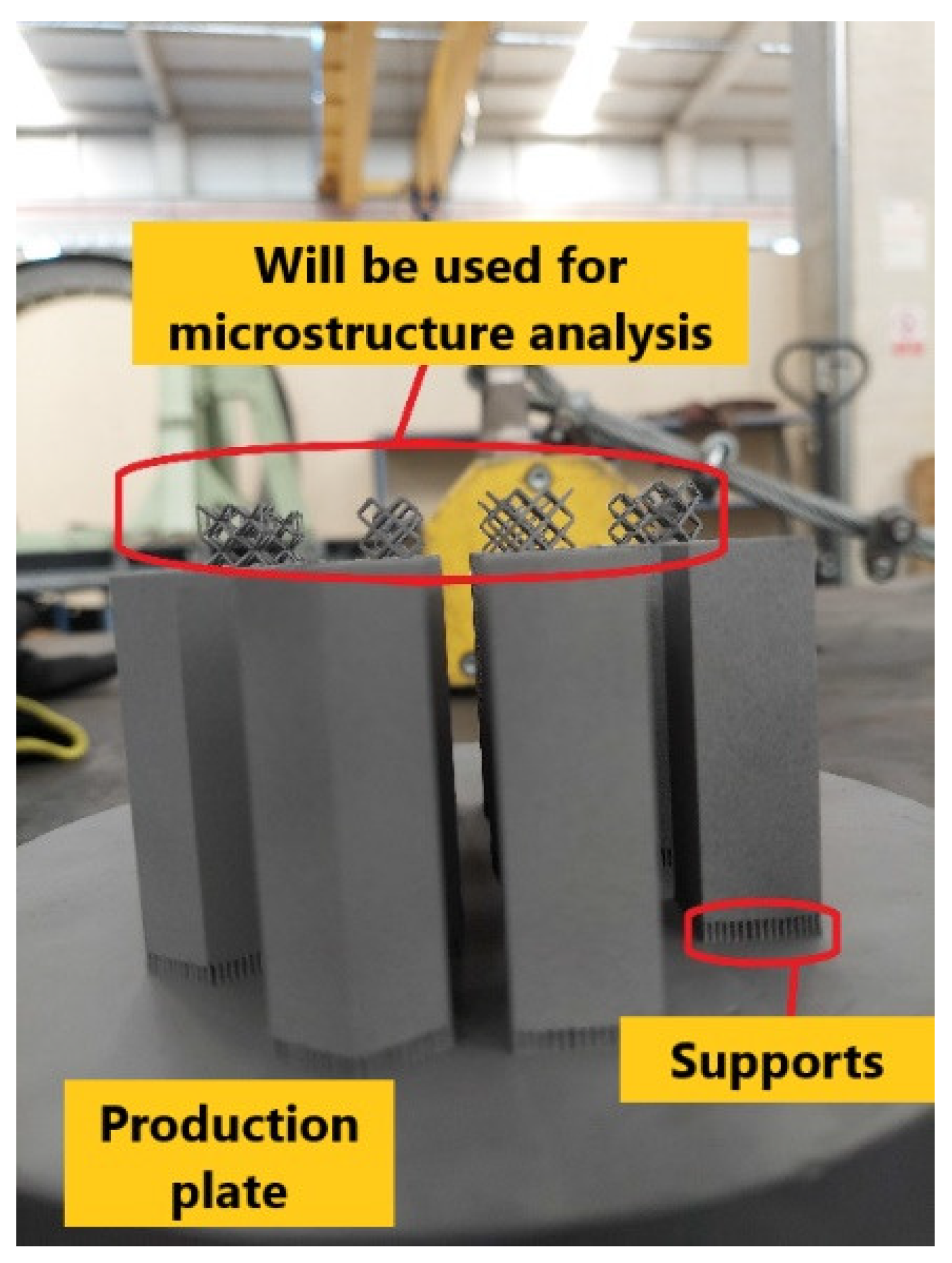

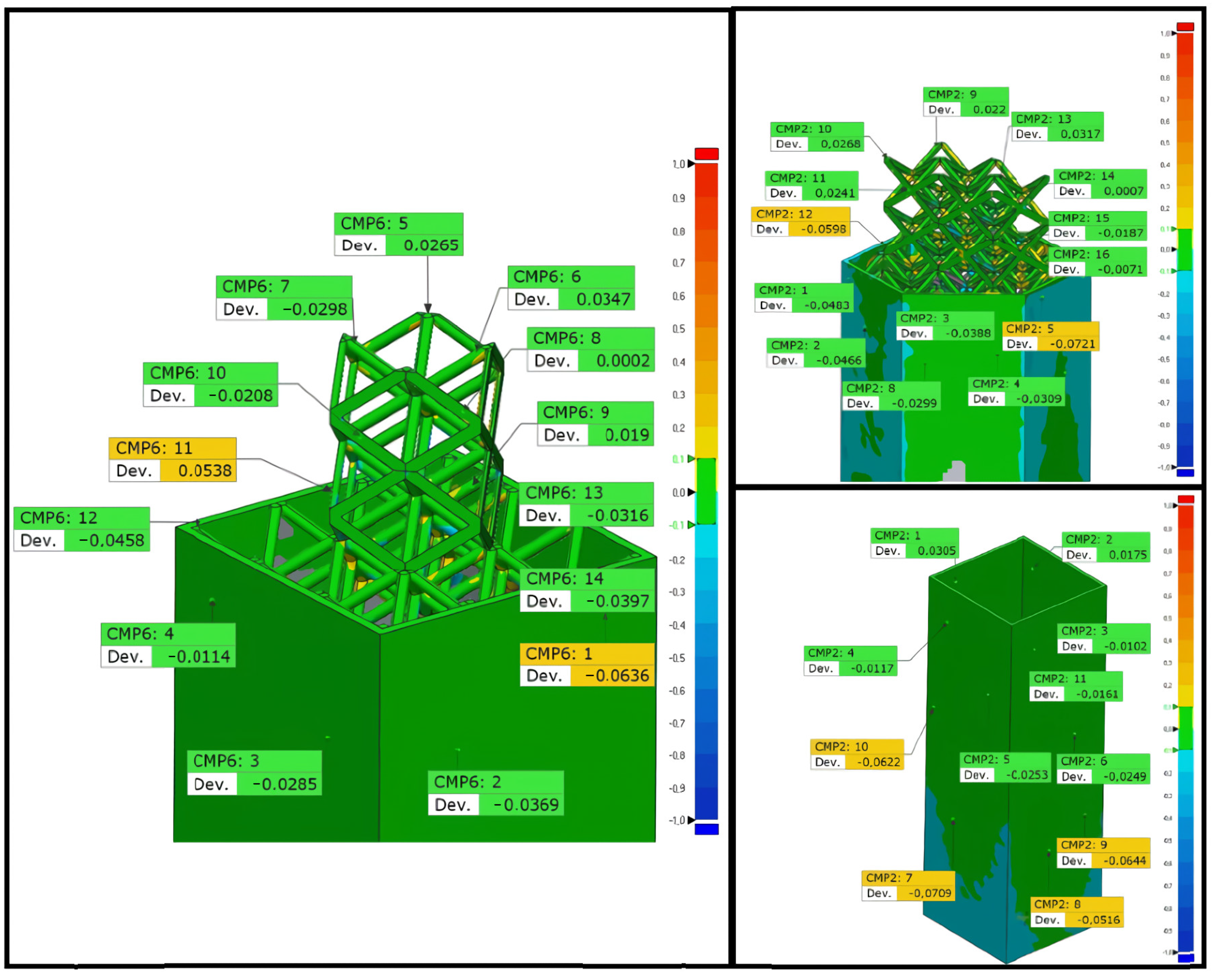
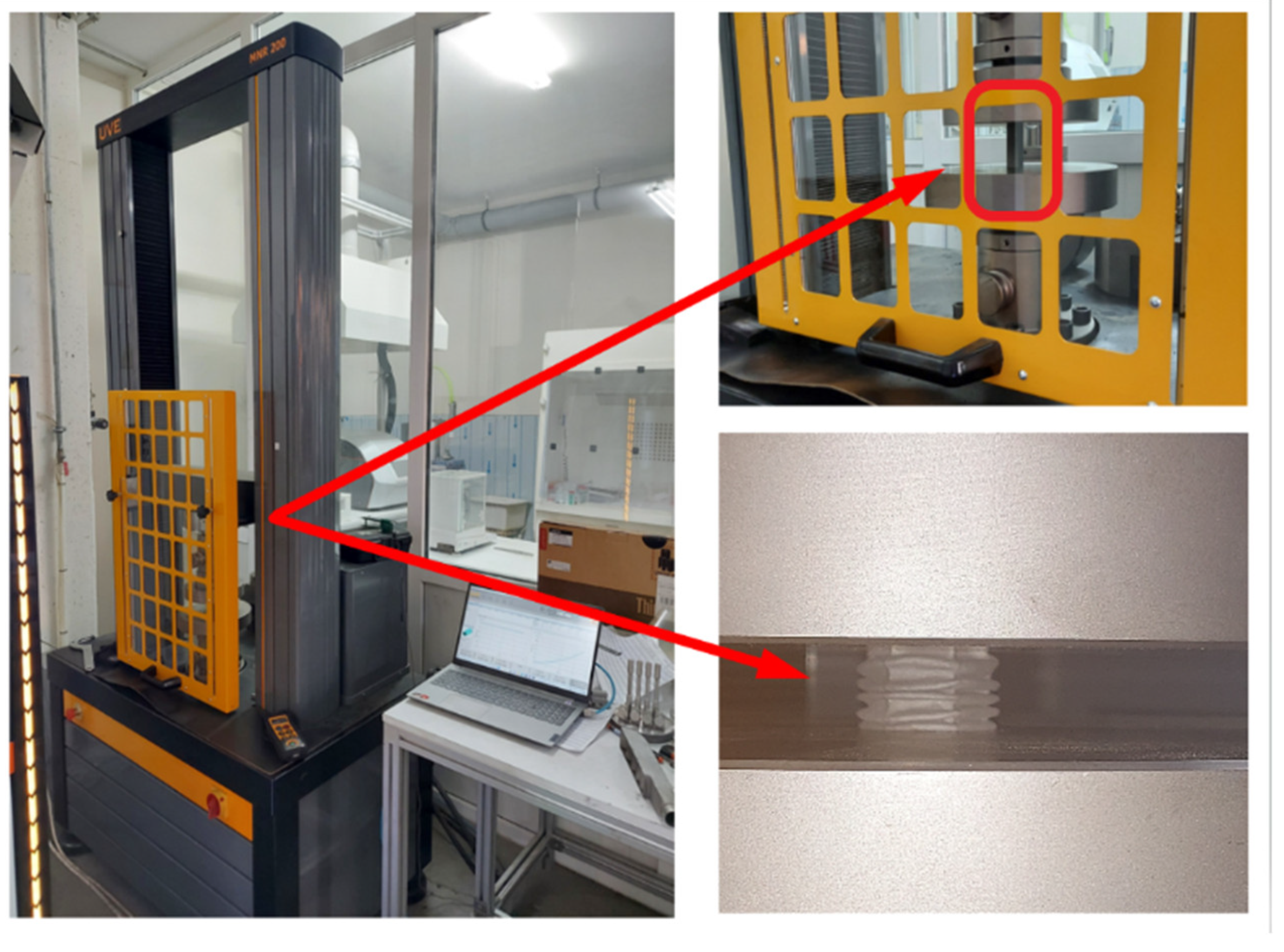
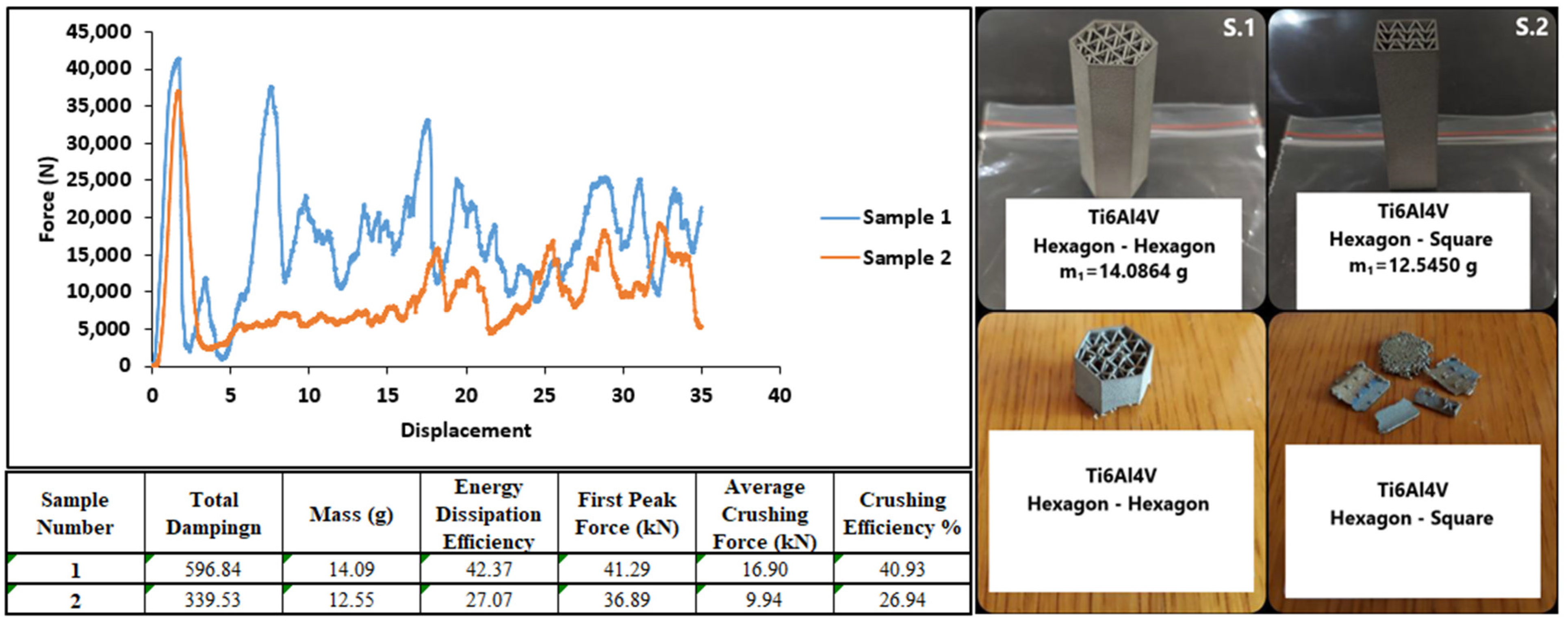


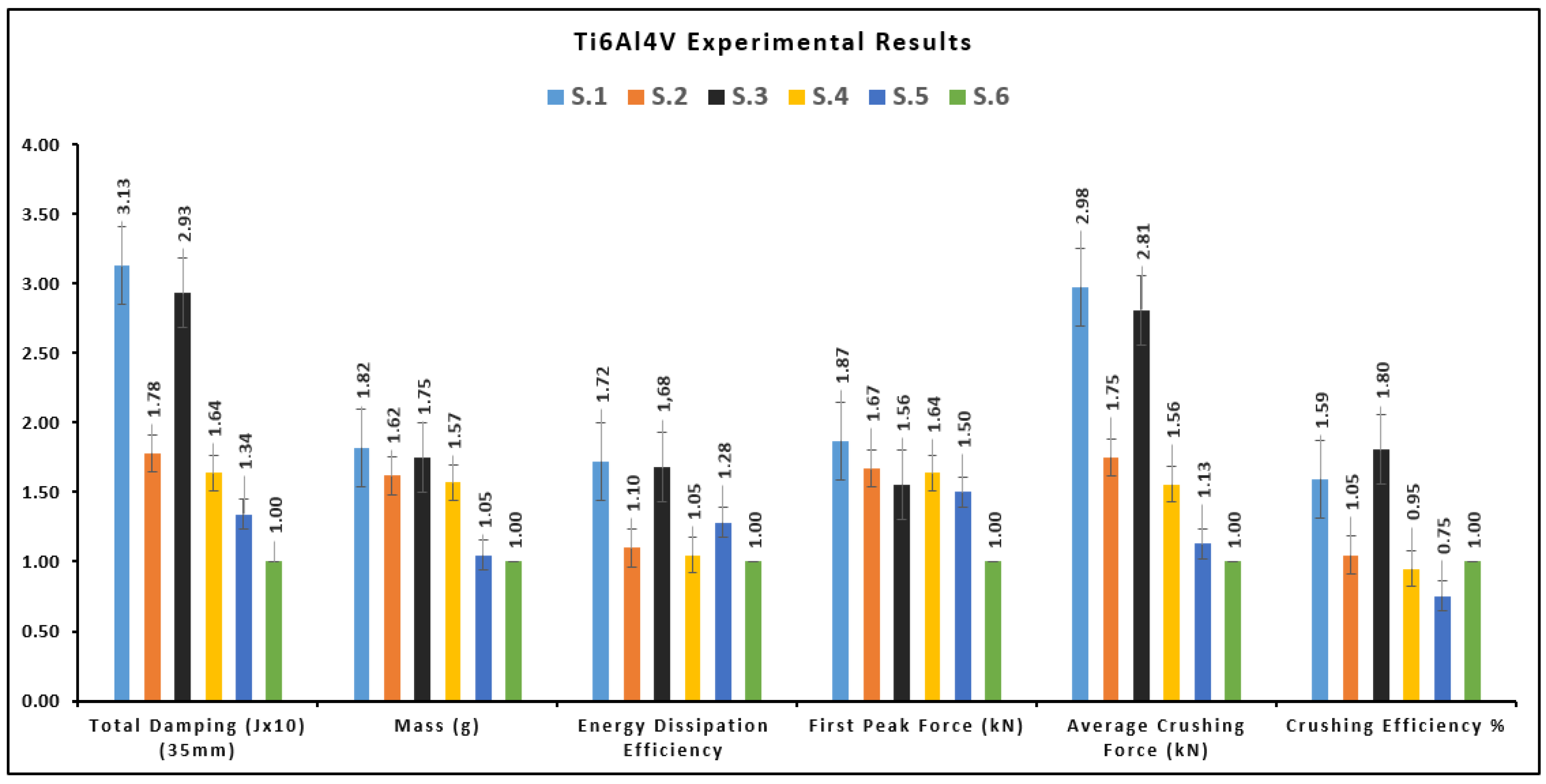
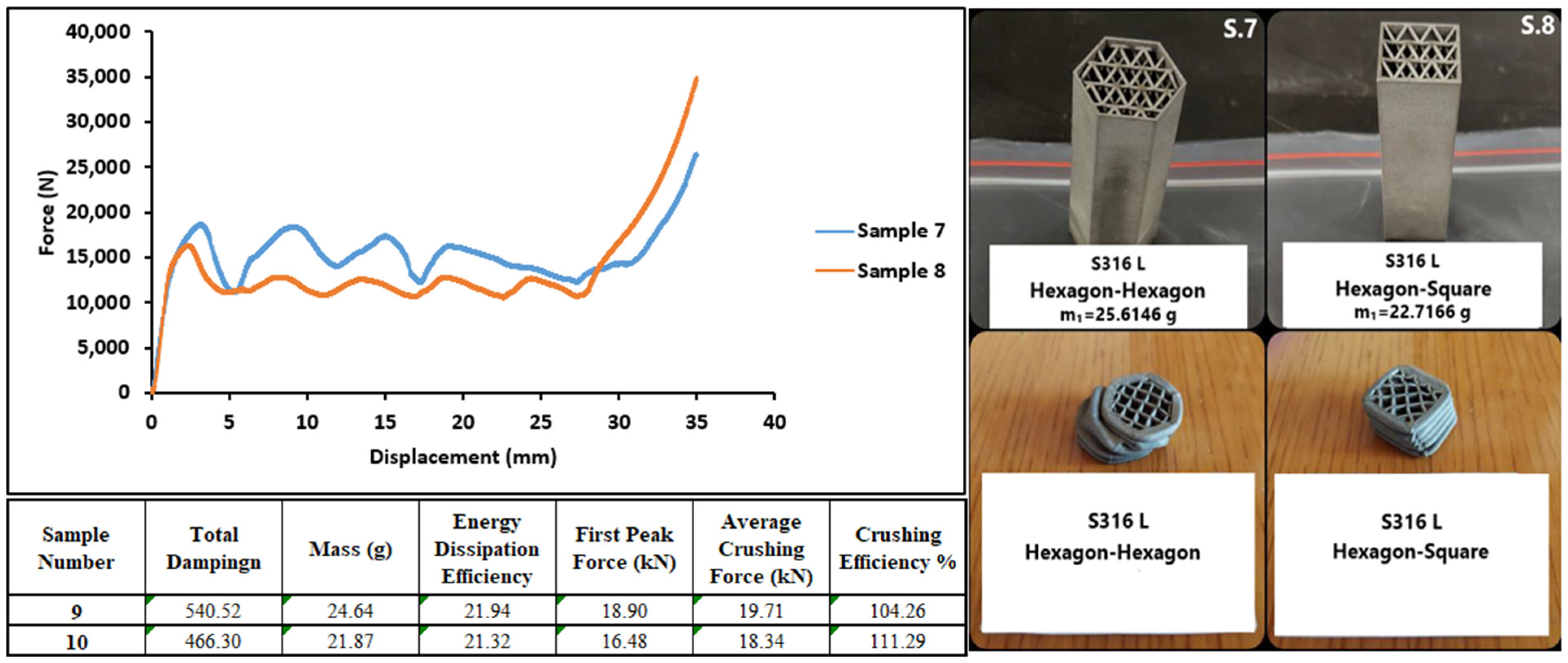
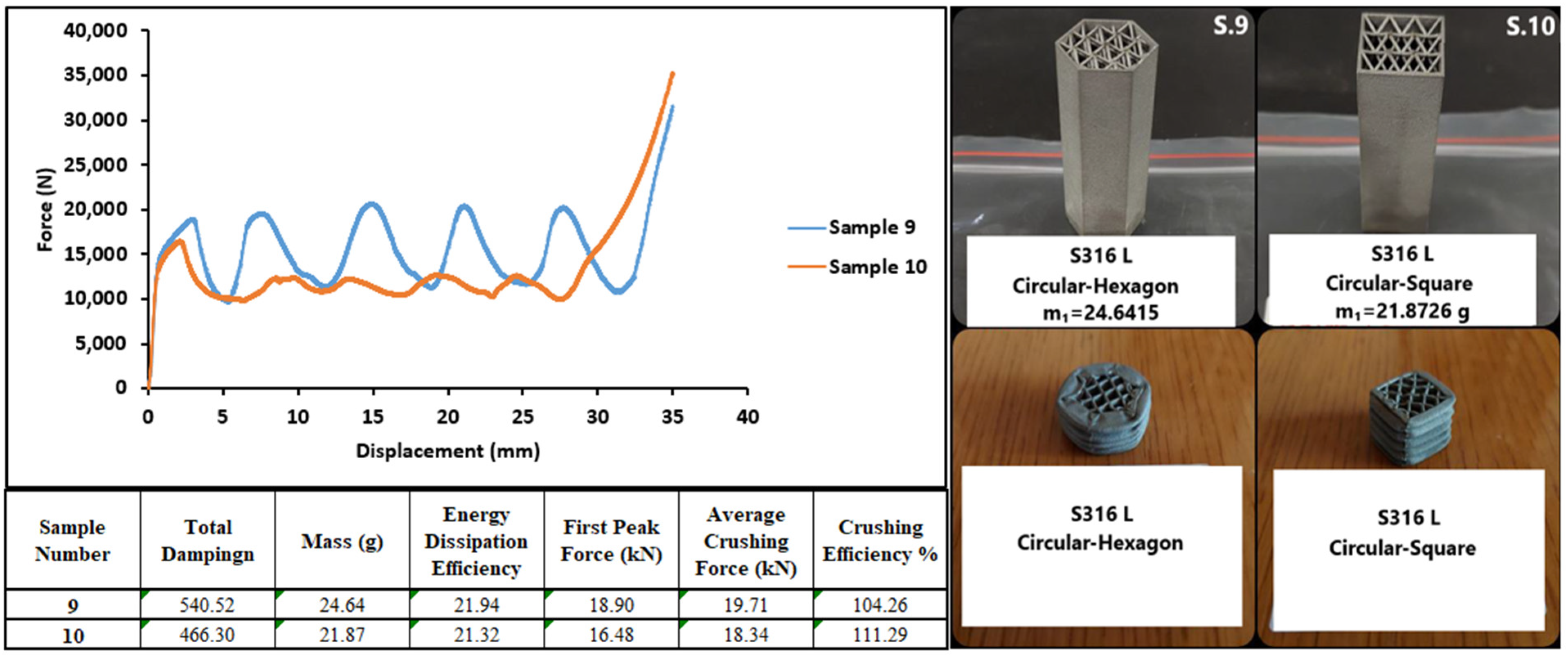
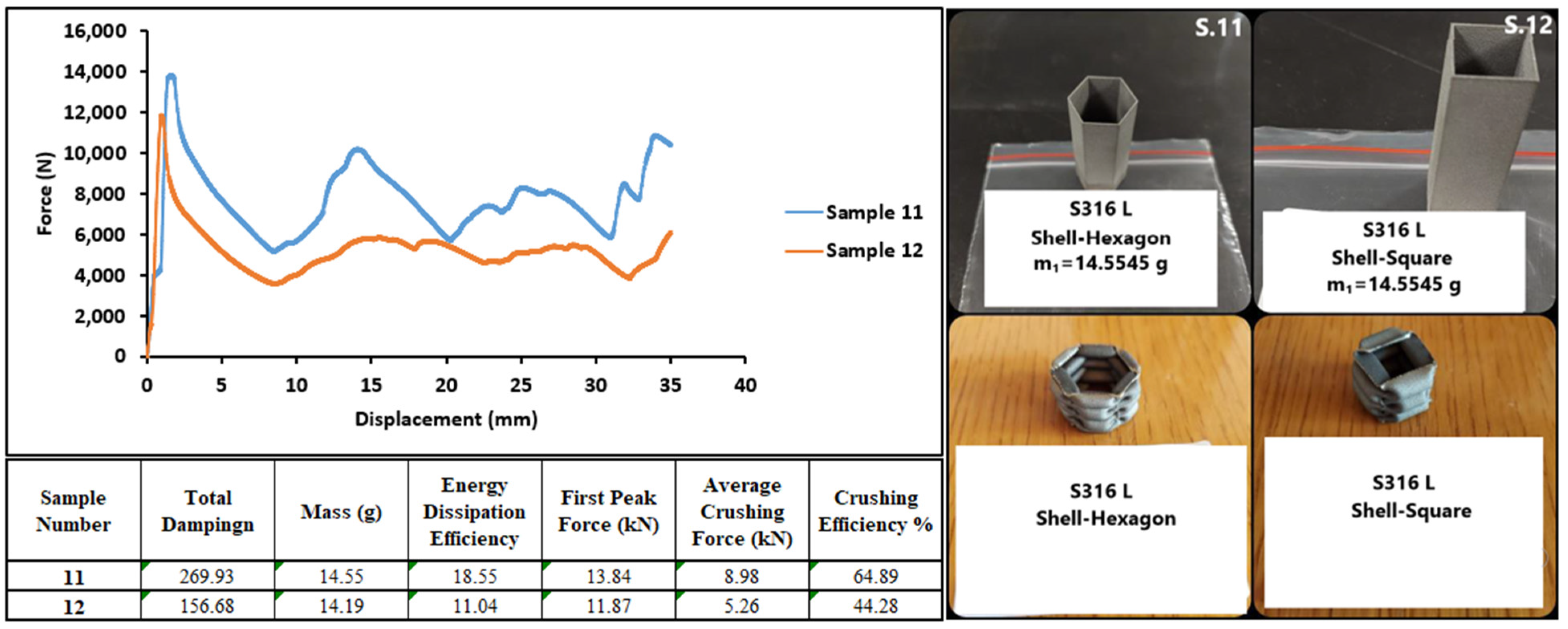
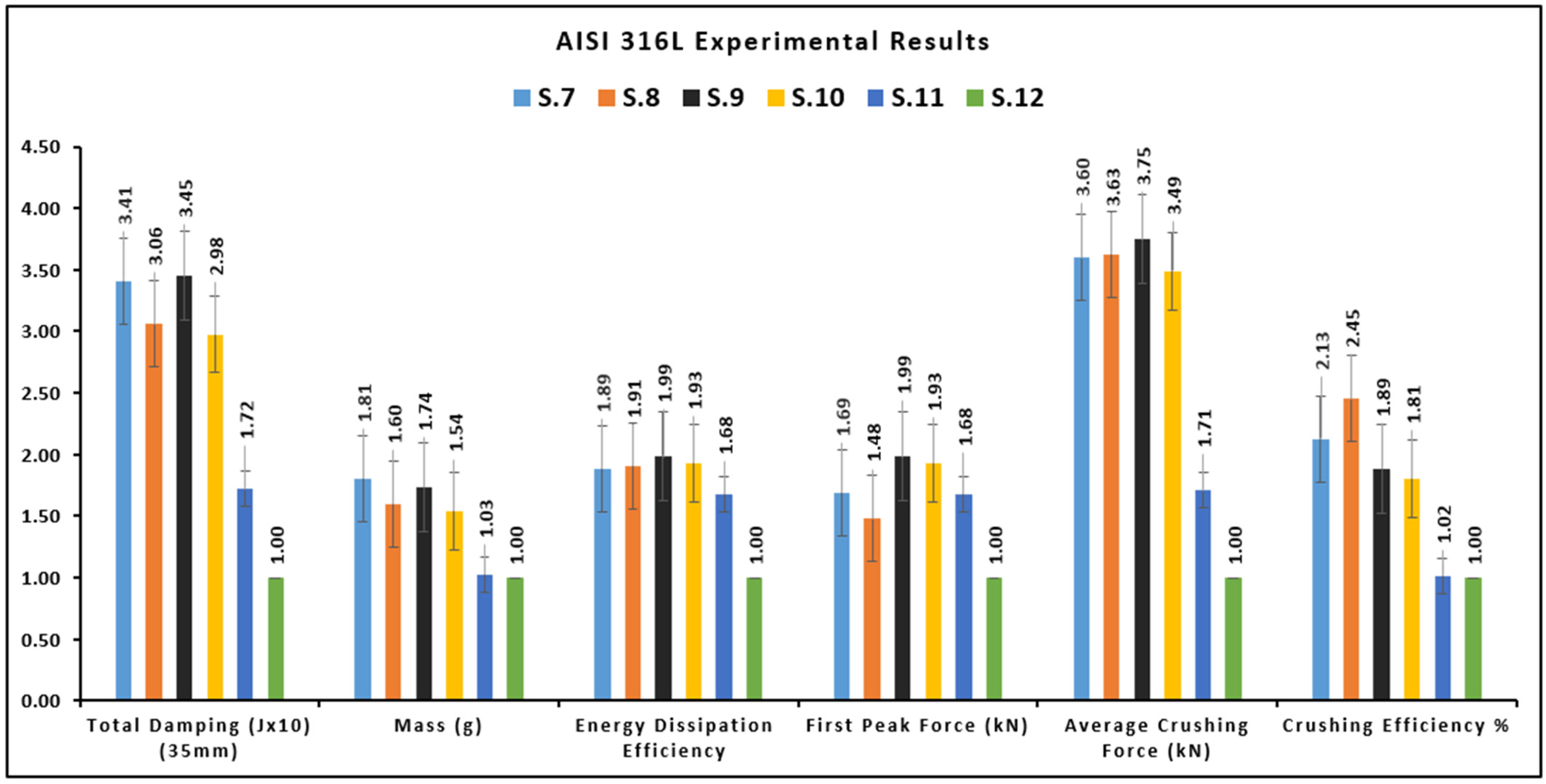




| Sample Number | Material | Internal Structure | Wall Geometry |
|---|---|---|---|
| 1 | Ti6Al4V | Hexagonal HMK | Hexagonal |
| 2 | Ti6Al4V | Hexagonal HMK | Square |
| 3 | Ti6Al4V | Cylinder HMK | Hexagonal |
| 4 | Ti6Al4V | Cylinder HMK | Square |
| 5 | Ti6Al4V | Thin-Wall | Hexagonal |
| 6 | Ti6Al4V | Thin-Wall | Square |
| 7 | AISI 316L | Hexagonal HMK | Hexagonal |
| 8 | AISI 316L | Hexagonal HMK | Square |
| 9 | AISI 316L | Cylinder HMK | Hexagonal |
| 10 | AISI 316L | Cylinder HMK | Square |
| 11 | AISI 316L | Thin-Wall | Hexagonal |
| 12 | AISI 316L | Thin-Wall | Square |
| 13 | Inconel 718 | Hexagonal HMK | Hexagonal |
| 14 | Inconel 718 | Hexagonal HMK | Square |
| 15 | Inconel 718 | Cylinder HMK | Hexagonal |
| 16 | Inconel 718 | Cylinder HMK | Square |
| 17 | Inconel 718 | Thin-Wall | Hexagonal |
| 18 | Inconel 718 | Thin-Wall | Square |
| Mechanical Properties | |||
|---|---|---|---|
| Horizontal (XY) | Vertical (Z) | Heat Treated | |
| Tensile strength, Rm | 1060 ± 100 MPa | 950 ± 100 MPa | 830 MPa |
| Yield strength, Rp0.2 | 980 ± 90 MPa | 970 ± 90 MPa | 860 MPa |
| Elongation at break | 7% | 6% | 6% |
| Density-ISO 3369 [49] | 4.42 g/cm3 | ||
| Description (Particle Size (µm)) | Standard (%Mass) | Measurement (%Mass) | Status |
|---|---|---|---|
| >45 | Max.5.0 | 1.6 | Suitable |
| ≤45 | Max.95.0 | 98.4 | Suitable |
| Description (Particle Size (µm)) | Standard (%Mass) | Measurement (%Mass) |
|---|---|---|
| D10 | Unspecified | 18 µm |
| D50 | Unspecified | 31 µm |
| D90 | Unspecified | 43 µm |
| Mechanical Properties | |||
|---|---|---|---|
| Horizontal (XY) | Vertical (Z) | Head Treated | |
| Tensile strength, Rm | 647 ± 20 MPa | 693 ± 15 MPa | 654 ± 20 MPa |
| Yield strength, Rp0.2 | 528 ± 17 MPa | 573 ± 14 MPa | 542 ± 17 MPa |
| Elongation at break | 36% | 37% | 36% |
| Density-ISO 3369 | 7.97 g/cm3 | ||
| Description (Particle Size (µm)) | Standard (%Mass) | Measurement (%Mass) | Status |
|---|---|---|---|
| >45 | Max.5.0 | 1.3 | Suitable |
| ≤45 | Max.95.0 | 98.7 | Suitable |
| Description (Particle Size (µm)) | Standard (%Mass) | Measurement (%Mass) |
|---|---|---|
| D10 | Unspecified | 22 µm |
| D50 | Unspecified | 33 µm |
| D50 | Unspecified | 42 µm |
| Mechanical Properties | |||
|---|---|---|---|
| Horizontal (XY) | Vertical (Z) | Head Treated | |
| Tensile strength, Rm | 1040 ± 50 MPa | 971 ± 50 MPa | 1150 ± 50 MPa |
| Yield strength, Rp0.2 | 758 ± 40 MPa | 636 ± 40 MPa | 812 ± 100 MPa |
| Elongation at break | 25% | 27% | 21% |
| Density-ISO 3369 | 8.22 g/cm3 | ||
| Description (Particle Size (µm)) | Standard (%Mass) | Measurement (%Mass) | Status |
|---|---|---|---|
| >45 | Max.5.0 | 2.1 | Suitable |
| ≤45 | Max.95.0 | 97.9 | Suitable |
| Description (Particle Size (µm)) | Standard (%Mass) | Measurement (%Mass) |
|---|---|---|
| D10 | Unspecified | 22 µm |
| D50 | Unspecified | 33 µm |
| D90 | Unspecified | 44 µm |
| Ti6Al4V | AISI 316L | Inconel 718 | |
|---|---|---|---|
| P (Watt) | 210 | 250 | 240 |
| V (mm/s) | 110 | 1000 | 850 |
| Powder Producer | APC | OERLIKON | OERLIKON |
| Gas | Argon | Nitrogen | Argon |
| Flow Rate (m3/s) | 10 | 13 | 13 |
Disclaimer/Publisher’s Note: The statements, opinions and data contained in all publications are solely those of the individual author(s) and contributor(s) and not of MDPI and/or the editor(s). MDPI and/or the editor(s) disclaim responsibility for any injury to people or property resulting from any ideas, methods, instructions or products referred to in the content. |
© 2025 by the authors. Licensee MDPI, Basel, Switzerland. This article is an open access article distributed under the terms and conditions of the Creative Commons Attribution (CC BY) license (https://creativecommons.org/licenses/by/4.0/).
Share and Cite
Çakır, Ö.F.; Erdem, M. Investigation of Lattice Geometries Formed by Metal Powder Additive Manufacturing for Energy Absorption: A Comparative Study on Ti6Al4V, Inconel 718, and AISI 316L. Machines 2025, 13, 316. https://doi.org/10.3390/machines13040316
Çakır ÖF, Erdem M. Investigation of Lattice Geometries Formed by Metal Powder Additive Manufacturing for Energy Absorption: A Comparative Study on Ti6Al4V, Inconel 718, and AISI 316L. Machines. 2025; 13(4):316. https://doi.org/10.3390/machines13040316
Chicago/Turabian StyleÇakır, Ömer Faruk, and Mehmet Erdem. 2025. "Investigation of Lattice Geometries Formed by Metal Powder Additive Manufacturing for Energy Absorption: A Comparative Study on Ti6Al4V, Inconel 718, and AISI 316L" Machines 13, no. 4: 316. https://doi.org/10.3390/machines13040316
APA StyleÇakır, Ö. F., & Erdem, M. (2025). Investigation of Lattice Geometries Formed by Metal Powder Additive Manufacturing for Energy Absorption: A Comparative Study on Ti6Al4V, Inconel 718, and AISI 316L. Machines, 13(4), 316. https://doi.org/10.3390/machines13040316






